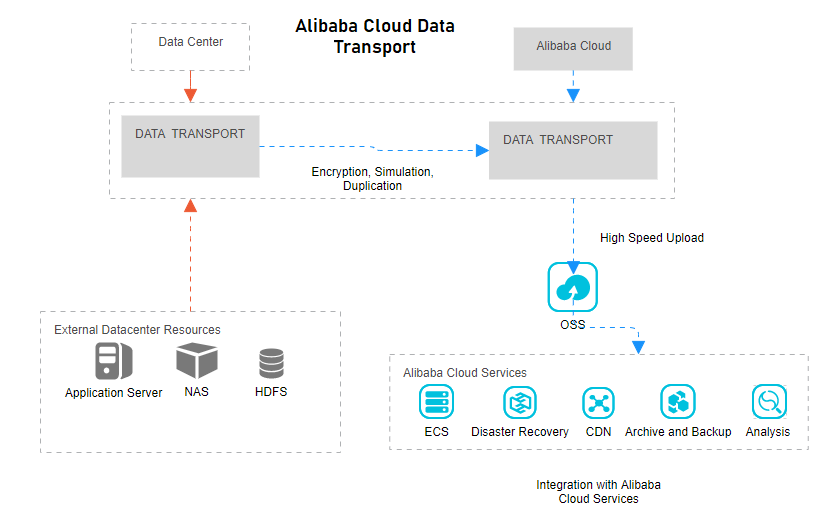By Shantanu Kaushik
Alibaba Cloud Object Storage Service (OSS) offers a best-in-class user experience with its network-based data access services. When it comes to storage, any developer or administrator will have to make an informed decision based on what the service or database will need in terms of resources to properly execute and maintain a viable link for high-availability and reliability.
Cloud computing has introduced ways to cut down time-consuming tasks for system administrators. The infrastructure that is being offered is highly-scalable and allows for real-time, on-demand provisioning without scaling the resources up or down.
Storage is one area that has made a significant improvement in the cloud universe. Alibaba Cloud has upgraded the storage service to offer maximum performance and redundancies to ensure a stable service. With that, disaster recovery plays an important role in service selection for any IT strategist.
The Object Storage Service enables you to store and retrieve a variety of unstructured data files over a network. These may include text, images, audio, and video files.
With OSS, one can:
Alibaba Cloud Object Storage Service (OSS) allows for easy data migration. Migration is a task that requires the utmost clarity in service and delivery. OSS supports the functionality to migrate data between buckets that are stored across multiple regions. It also supports data migration between the same region and migration between different Alibaba Cloud accounts.
The Alibaba Cloud Data Transport helps migrate data from on-premises to the Object Storage Service. It also offers migration between cloud resources and from one Alibaba Cloud account to another. 'Let's take a look at a scenario where an external data center is being migrated to Alibaba Cloud Object Storage Service (OSS).

The Data Transport service enables you to easily transport your data from various data sources into Alibaba Cloud OSS. To do this, all you need to do is to log into your Data Transport console and create a migration job. You will need to punch in the source data stream address and the OSS end-point where you plan to migrate data.
Analyze and access the data requirement
Authorize and grant permissions
You can select HTTP or HTTPS-based end-points and access those from the Internet. Follow these links:
If you are using Internal HTTP or HTTPS end-points, you can access those with these links:
When you have checked all of the boxes for bucket migration, you will need to choose a migration type. You can choose to migrate using full migration or incremental migration.
With full migration, you can choose the Start Point Time file, this will enable you to migrate files that were modified after the specified date. When you choose this setting and re-run the migration task after some time, only the data that has changed after the last migration job will be considered for migration.
Alibaba Cloud Object Storage Service (OSS) allows you to migrate data in short bursts. You can specify the migration interval, Start Point Time, and migration times as parameters. After the initial migration with modification time as parameter is completed, the incremental migration scenario will follow the specified migration interval and migration times parameters to run the migration job.
After you have created the migration job, you can check its status from the console. Alternatively, you can select the flow control settings for your migration job:
Navigate to "Data Online Migration"
If you wish to view a migration report:
If your migration fails, you can check the report for detailed reasons:
The Data Transport service makes almost every migration task possible with a few clicks. You can choose from the options that best suit you and finish a migration job without losing any business.
Business Continuity is important. Alibaba Cloud OSS has made it easy to migrate data from one bucket to another or from an on-premises setup to Alibaba Cloud OSS. You can also choose to migrate from bucket to bucket from different Alibaba Cloud OSS accounts.
The service utilizes Data Transport for transmission and also incorporates products like ECS, RAM, CDN, and MTS for better management and data operation. The overall system has an operating system that optimizes data delivery with a secure and reliable channel at hand.
Making CDN Programmable: Use Cases, Script Overview, and EdgeScript Demos

2,593 posts | 791 followers
FollowAlibaba Clouder - October 26, 2020
Alibaba Clouder - August 6, 2020
Data Geek - November 11, 2024
Alibaba Clouder - November 2, 2020
Alibaba Clouder - November 10, 2020
ApsaraDB - November 5, 2024

2,593 posts | 791 followers
Follow Best Practices
Best Practices
Follow our step-by-step best practices guides to build your own business case.
Learn More Hybrid Cloud Distributed Storage
Hybrid Cloud Distributed Storage
Provides scalable, distributed, and high-performance block storage and object storage services in a software-defined manner.
Learn More OSS(Object Storage Service)
OSS(Object Storage Service)
An encrypted and secure cloud storage service which stores, processes and accesses massive amounts of data from anywhere in the world
Learn More Database Migration Solution
Database Migration Solution
Migrating to fully managed cloud databases brings a host of benefits including scalability, reliability, and cost efficiency.
Learn MoreMore Posts by Alibaba Clouder